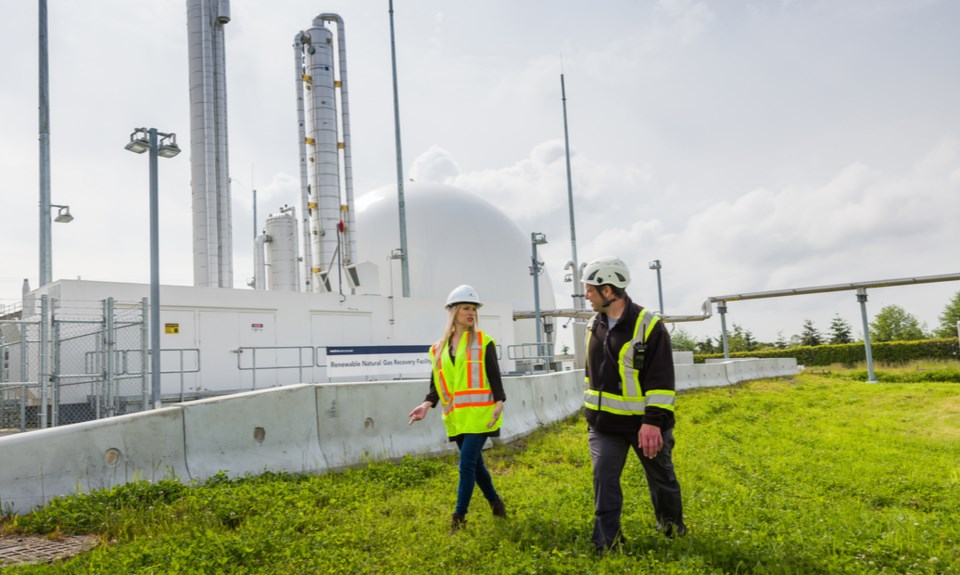, I considered how a diversified approach helps to promote reliable access to energy—one of the three interdependent elements that, along with sustainability and affordability, make up the energy trilemma.
This time, the focus is how conservation, energy efficiency and lower-carbon energy support the sustainability element of the trilemma.
The three parts of the energy trilemma are like the legs of a tripod. If one leg weakens, it threatens the whole structure. They can’t be thought of or managed in isolation. As a utility dedicated to meeting the energy needs of our customers, we’re focused on ensuring all three of those supports stay strong as we help advance B.C.’s energy transition.
When it comes to the trilemma’s sustainability component, careful management of energy resources plays a crucial part.
Efficiency has become a top concern for the energy industry worldwide and is part of how we can help reduce overall greenhouse gas (GHG) emissions. We have helped lead the way in this realm, having first introduced energy-efficiency programs for customers in 1989, and reducing energy use is a key element of our . It is why we plan to invest a record $694.8 million to help gas and electricity customers reduce their energy use over the next four years.
The new funding under our demand-side management expenditures plan allows us to shift our efforts to advanced energy-efficiency initiatives and programs. Some of our current initiatives include rebates on windows, doors and insulation; we’re also evaluating dual-fuel heating and cooling systems, to see how electric heat pumps and high-efficiency gas furnaces work together in different homes across the province. This summer we introduced a rebate to help lower the upfront cost of installing these dual-fuel systems.
Dual-fuel systems may also help us manage the power grid by lowering demand on the system during peak times, such as during periods of cold weather, when gas furnaces can be more energy efficient than electric heat pumps.
We’re also exploring new approaches to energy efficiency through home retrofits that reduce energy use and GHG emissions.
With the British Columbia Utilities Commission’s (BCUC) acceptance of our demand-side plan, we have a target to help customers reduce gas use by 3.8 million gigajoules and overall GHG emissions by 200,000 tonnes of carbon dioxide equivalent over the four years of the plan, and 14.4 million gigajoules and GHG emissions of nearly 745,000 tonnes of carbon dioxide equivalent over the lifetime of the energy-saving measures.
When coupled with another recent BCUC decision that gave the go-ahead for all our gas customers to have one per cent of their gas designated as renewable natural gas (RNG), along with the continuation of our voluntary RNG program, we believe it is clear that progress is being made to support sustainability.
Designating one per cent of our customers’ gas supply as RNG is the first such program of its kind in North America and is aimed at improving the sustainability of B.C.’s energy system by raising the amount of RNG in the gas system.
We’re deploying similar innovation in our electricity operations to promote sustainability, such as a rewards program that will help to control Wi-Fi-connected thermostats and electric vehicle (EV) chargers remotely to reduce energy use during peak hours of the day.
At the same time, our network of EV charging stations in B.C.’s Southern Interior hit a milestone this year, surpassing one million kilowatt hours of energy delivered. This has offset 875 metric tonnes of GHG emissions, which is equivalent to taking 268 gas-powered cars off the road. This year also saw those stations reach a milestone 50,000 EV charging events.
We’re aspiring to continue putting measures like these into action in both our gas and electricity operations to realize greater energy savings. Doing so allows us to help our customers reduce energy use while also delaying the need to spend more on expanding infrastructure, helping support energy affordability for B.C. families and businesses.
Roger Dall’Antonia is president and CEO of FortisBC. This op-ed is the second in a three-part series that examines the energy trilemma facing B.C.


